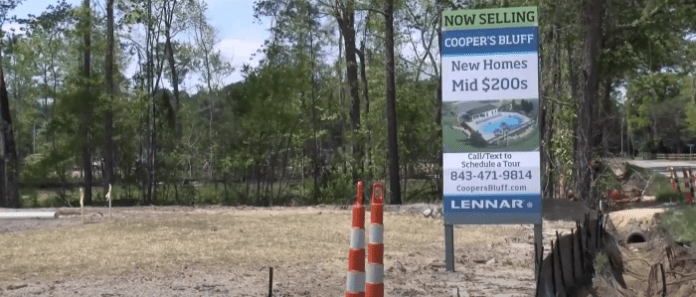The Grand Strand has witnessed boom cycles in real estate in the late 80s, 90s, and 2008.
The latest market is the hottest prolonged boom cycle we have seen in 60 years.
New developments are on back order. Existing homes, placed on the market, are selling same day, often at a higher price than the listed rate. Home prices have risen 19% in just over one year.
The experiences of 2020 have many people living in urban areas choosing to relocate.
NOT JUST RETIREES
Past booms in Horry County were largely about Baby Boomers buying a second home or choosing to retire to the area.
The latest cycle features a large number of young starter families with small children.
Understanding the Real Estate Boom and Bust Cycle
The boom and bust cycle is the process of economic growth and decline that occurs repeatedly. A boom refers to a period of increased economic growth when jobs are plentiful and the market brings high returns to investors. Subsequently, a bust is a period of time when economic growth decreases, people lose their jobs and investors lose money. Since the mid-1940s, the US economy has experienced several boom and bust cycles but has been enjoying a housing boom since 2009 (after the great recession). But why do we have a housing boom and bust cycle instead of a long, steady economic growth period? It goes back to three forces that, when combined, cause a real estate boom or bust. They are:
- The law of supply and demand
- The availability of financial capital
- Future expectations
Strong demand is the leading force to creating a boom. When families are confident about the future, they buy more. They know they got good jobs and their homes and investments will increase in value. During a boom, banks make it easier to obtain credit by lending money at low interest rates. Individuals and businesses can then borrow money easily and cheaply and invest it in, say, technology stocks or real estate. Many people earn high returns on their investments, and the economy continues to grow.
The problem is that when credit is too easy to obtain and interest rates are too low, people will overinvest and the economy can overheat. In turn, there won’t be enough demand for, say, all the homes that have been built. When this happened, the bust cycle will set in. In this time, things that have been overinvested in decline in value. Investors lose money, consumers cut spending, and companies cut jobs. In addition, when those who borrowed during the boom cycle become unable to make their loan payments, credit becomes more difficult to obtain. Bust periods are referred to as recessions.
In the bust phase, the main force is plummeting expectations about the future. For example, when the stock market crashes or corrects, investors and consumers get nervous. Investors will then sell their stocks to buy safer investments that traditionally don’t lose value (like real estate investments). Moreover, as more companies start to lay off workers, consumers lose their jobs and stop buying anything but the necessities. In turn, that causes a downward economic spiral. The bust phase stops when supply lowers prices enough to fuel demand. In other words, when prices are so low that cash investors can start buying again and this restores confidence quickly.


